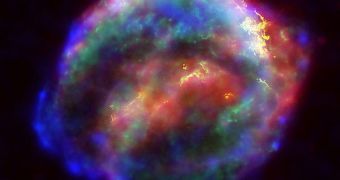We know much about stars, but even more to learn about them, otherwise we wouldn't try to replicate them here on Earth, would we? Stellar life, evolution and death are now becoming the points of interest for the European research program, which plans to study about 25 nuclear reactions that take place inside stars throughout their lives, during nuclear fusion reactions and critical events that occur during the final stage of their existence, as they eject massive amounts of heavy elements into interstellar space.
The theoretical challenges posed by stellar reactions have been mostly solved over the last half of century or so, but no practical experiment was carried out to test certain aspects of the theory, mostly due to the technical difficulties experienced while trying to build a large complex that can act as laboratory for stellar evolution and nucleosynthesis.
A lot of theory but no experiment
This will soon be a thing of the past, in the opinion of Sotirios Harissopulos, from the National Center of Scientific Research "Demokritos" facility in Greece. "We now want to build a state of the art facility to disentangle all these problems," said Harissopulos. The cost of the build is evaluated at 10 million Euros, budget that will be supported by the European Science Foundation.
Most of the facilities in Europe, capable of carrying out experiments involving nucleosynthesis are either closed, out of date, or will be transformed into laboratories studying interactions in low-energy nuclear physics. For this reason alone, Europe will have to build, in the near future, a laboratory capable of sustaining intense stable beams for nuclear astrophysics and advanced detection techniques.
The only alternative facility present in Europe at this time is the Radioactive Ion Beam laboratory, that can conduct experiments that simulate various stellar explosion scenarios and nucleosynthesis reactions, however it does not benefit from the presence of a stable ion beam which could bring far much information than the RIB is currently capable to generate. It is true that unstable ion beam can provide extremely detailed pictures of the processes that take place during nucleosynthesis, albeit these pictures would never be complete without the contribution of stable ion beams and reactions determined by neutron interactions.
Supernovae, key to stellar processes understanding
Not much takes place during a star's life, that's why supernova explosions are the main interest when talking about stars, especially if the explosion produces a massive shock wave in the process. For the last two years, the European Collaboration on stable ion-beams has been working on evaluating the scientific relevance a stable ion beam would bring to nuclear physics research, thus revealing that low-energy and high-energy stable ion beams facilities represent vital aspects in the development of our future understanding of the stars and stellar evolution.

 14 DAY TRIAL //
14 DAY TRIAL //